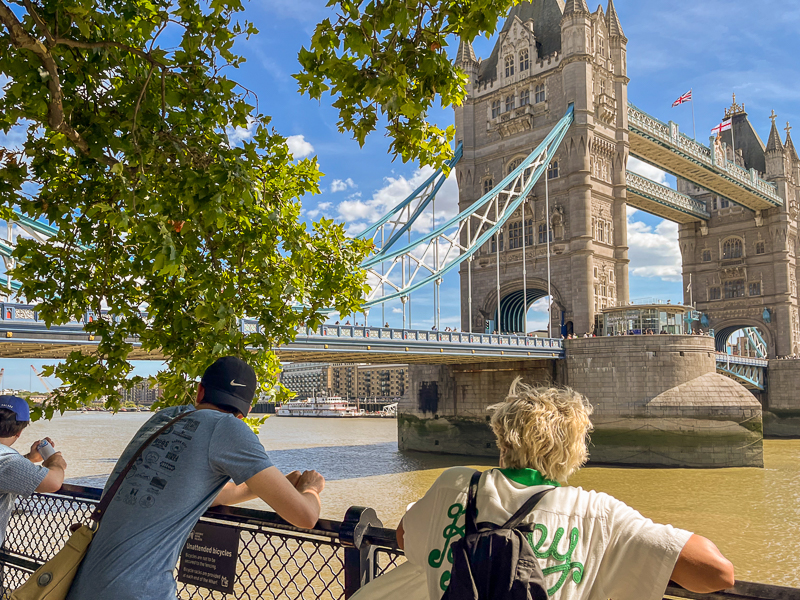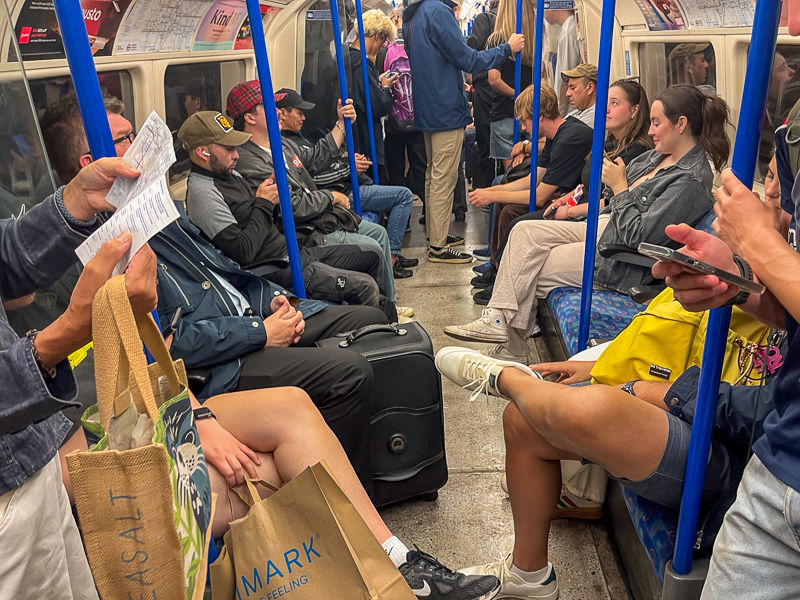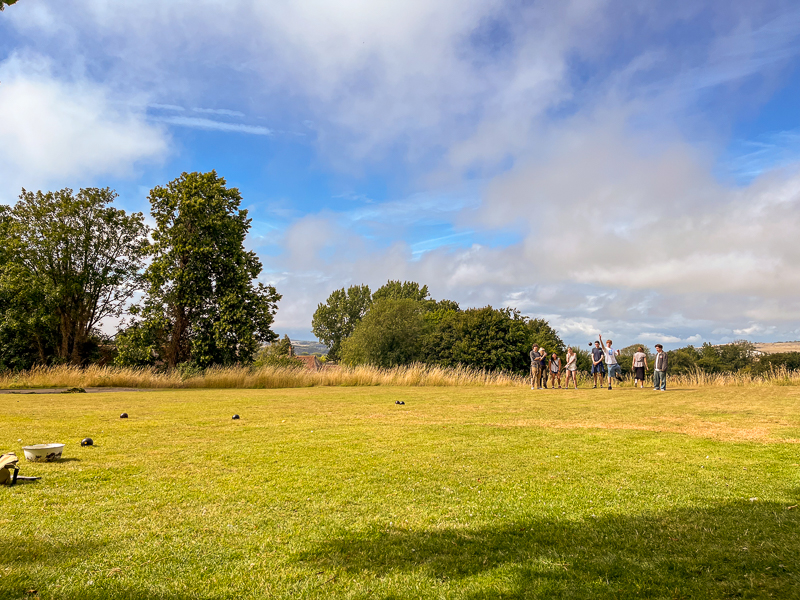
Move
Anthony Bourdain, a man I admire, once said, “If I’m an advocate for anything, it’s to move. As far as you can, as much as you can. Across the ocean, or simply across the river. The extent to which you can walk in someone else’s shoes or at least eat their food, it’s a plus for everybody…”.
I love London, England. I love the concrete and the cobblestone and the flash rains. I love the omnibuses and stepping out of the muggy Underground into the wind tunnel of a historical landmark that is Piccadilly. I love the Thames, even if I wouldn’t touch the water with more than a steel-toed boot. I love the streets covered in paint and gum, the hole-in-the-walls where friends and family clamor for pints or Chinese food. I love London. But how did I get there? Well, it wasn’t by accident, unless we’re speaking cosmically. If you haven’t heard (though if you’re reading this, I’m fairly certain you might’ve), Cal has a pretty broad range of abroad opportunities. From across the Atlantic to across the Canal, UC Berkeley has a place that fits both a need for adventure and for academic credits.
What if you’re worried you can’t manage a trip? As a transfer student, I didn’t think I could afford the time, the units, or, well, money, to include going abroad in my UC experience. Maybe you feel the same way, and you figure it’s just not in the cards, maybe not worth the trouble. Well, let me tell you, it is worth the trouble, and the trouble itself isn’t even all that troublesome. Cal has a lot of plans and opportunities for you to boldly go where you’ve never gone before. Why don’t I tell you a little bit about how I managed it, and maybe then you’ll be thoroughly gassed and ready to move.

Me (far right) and some friends at Tower Bridge.
Point on a Globe
I’m not necessarily the most spontaneous chap around, and traveling abroad can be a bit of a monkey-wrench in the gears of an already complicated academic schedule. So how does one manage to fit an English traipse into a tight transfer graduation plan? A good question, you fastidious vagabond, you. Being a transfer student does limit the options a tad; I have a small calendar and I’m chasing after credits. But if you’re considering studying abroad, there are plenty of ways to go about it. The easiest solution for me was to do a summer abroad, rather than a semester. It’s shorter, cheaper, and less intensive. Now, that’s a double-edged sword; some folks are looking for longer and more involved, but my shelf life here at Cal is already pretty short and, personally, I want to make as much of my time at Berkeley as possible. So summer, it is.
Ok, so you know the when; what about the where? Well, if you trust the byline at the bottom of this page, you may know that I’m an English major, so I decided that I wanted to put my abroad experience towards my major credits. That naturally pointed me towards London and the Literary Imagination program, but there are plenty of different programs for the same location; you could just as easily use a summer program to fulfill other credit needs, too, so you have a bit of space to play around. This course was six credits and it basically finished off my English elective needs, but I could have also chosen a different program and used it to fulfill my non-major credit requirements. Of course, speaking to an academic advisor about what you need and how you can fit an abroad program in is always a good idea. There’s something for everyone, and you can almost definitely make it work with your schedule!
Pack, Budget, Explore
I’m a nervous traveler and a poor planner; a terrible combination. Luckily, there are lots of great resources on campus (and from our very own team!) that can help prepare a skittish flyer like me. No matter where you’re going, though, it’s a good idea to pack light. My residence had all the amenities I needed, including a washer and dryer, so I only brought a week’s worth of clothing. Know your locale, too! London has been having some warmer summers these days, but I knew there was still a risk of rain (something I was desperately hoping for), so I brought a mixed bag of outfits. I would also recommend looking at flights as soon as possible, as that’s typically not covered in program expenses.

The London Underground Tube.
Which brings us to budget! Again, we have lots of great info for you, but let me tell you a bit about my own plan. Going in, I organized the most important aspects of the trip I wanted to focus on. For one, I knew that I wanted to eat out as much as possible, and that gets expensive. Despite what you may have heard about British food, London has some brilliant restaurants and dives, and a massive variety of culinary cultures. I chose a few big-ticket locations, like Fergus Henderson’s St. John, and set aside some cash for those occasions. Other than that, I tried to eat out once a day and bought more versatile and efficient groceries–like rice and eggs–for when I was home. Now, I didn’t do much traveling outside of London once I got there. I wanted to spend more time exploring the city, but plenty of my peers made use of the opportunity to make additional excursions. With London being so close to many other places, it’s not very difficult to pop over to France, Italy, Spain, or even Scotland. A word to the wise, though; plan these as far in advance as you can, as it was peak travel season during my time there, and short-notice off-the-cuff plane and train tickets can get a little pricey. Try to know what your program schedule is going to be like, too. Mine was pretty accommodating, giving us three to even four-day weekends to travel on our own time. Just remember to let people know where you’ll be.
Getting around the city itself was easy: London’s famous Underground really is an elementary thing to use, and the buses typically run smoothly—though there’s no accounting for traffic. London is divvied up into 9 concentric zones for transportation, starting with zone 1 in the center and radiating outward. As part of the program, we were given all-access transport passes for zones 1 and 2, which cover almost half of London. So with such a long leash, it was easy to get blissfully lost in the modern empire.
Get With the Program
I think everyone loves a good vacation, but it’s easy to get a little slothful on a trip, especially if you don’t know too much about the place you’re going. Thanks to the equal parts diligent and enthusiastic program leaders, I had new places to tour pretty much all week, whether by itinerary or by recommendation. For those worried about an excess workload during your stay, limit your fretting. The curriculum itself is engaging without being demanding, and the touring of the city and nearby locations (such as Virginia Woolf’s country estate) is woven well into the actual course discussions. London and the Literary Imagination focused on post-war literature and art, and how this new shell-shocked society began to express its trauma in dynamic and experimental form.

Virginia Woolf’s Monk’s House yard.
The program walked us through both the literary climate of the post-war and the cultural forces at play within the war itself that largely shaped that climate. Not too far south of the river Thames lay the Imperial War Museum, where we spent a day eyeing the artifacts of the most consequential display of contemporary man’s capability to destroy and control. I’m a sucker for a museum, and I could have spent the whole day there, walking through history; but really the entirety of this program was a walk through history, from the National Portrait Gallery to the street tours of Bloomsbury to the priory of Lewes, our engagement with the physical and written history of England brought about a palimpsest sort of experience for ourselves. The program lectures themselves were fairly light, emphasis was focused more on direct experience with the city and relating locales and history to the literary content, attempting to trace the transformation of artistic tone and style taking hold of this land that was still literally rebuilding itself. Coursework consisted of a few readings, two papers, two journal entries, and a final artistic project. It was perfectly manageable to complete the work and move around the city at your own pace. Speaking of the city…

The Imperial War Museum.
In the Neighborhood
I’m not much of a souvenir guy; I prefer to pay for experiences rather than fridge magnets (Queen knows there’s enough of those), and there’s quite a bit of life in London to live. There are the big and easy sights, like Parliament, Shakespeare’s Theater (aka The Globe Theatre), and London Tower, and those are certainly worth checking out (particularly catching a production at the theater, watching Merry Wives of Windsor was a raucous laugh), but so much of London is in the lanes, boroughs, and markets. One of the biggest pluses of seeing a country through an abroad program is being there with a whole crew of other folk who are just as excited to see the place as you are. I made some great friends in my program, and we all pretty much went everywhere together.

View from inside The Globe Theatre, Shakespeare’s main theater in London.
There were plenty of historic (not to be conflated with quiet or boring) neighborhoods for us to see. Camden Town was bustling constantly; during the day, the market streets are filled with food, and similarly filled at night with rowdy folks. Brick Lane, the premier vintage market, was stacked with fashion and art to drain what’s left of your limited budget. Chinatown is maybe fifty paces from Soho; there’s a whole night to be had right in those five blocks. Westminster is a classier affair if you’re in the mood, home to Duke’s, the lounge where Ian Fleming came up with 007’s signature drink. Fancy a park? Hampstead Heath or Regent’s Park are perfect for those warm picnic afternoons that Hyde Park is just too busy to offer.
Maybe it’s a little intimidating, such a big city, so much to see, how do I get to it all? My advice: walk. Anywhere. Take the bus for twenty minutes in any direction, the tube for as long as you can stand the heat, and move whichever way the wind gestures. Find a restaurant, a garden, a pub, a place you’d never and might never again see, and sit in the vinegary air of it. The people of London are—as you’ll find most people anywhere are—lovely. You’ll love to hear about their life in the city as much as they’d love to know about yours.

Ye Olde Cheshire Cheese, located on Fleet Street.
If you’re a little wanting for details about the full extent of the fun of my trip, good. There’s too much to talk about here anyway; that’s why you’re supposed to go there. And you can, you can go almost anywhere you want, Golden Bear. Learn about a place, live there, even if only for a month, and immerse yourself in the corners and communities of the world you don’t yet know. Find the places that in ten or twenty years time you could walk back into and breathe familiar air, take the same seat as last time and almost feel the warmth from when you last stood up from it. A place that smiles to see you as much as you smile to see it. Find your London, I know where mine is. Like a man I admire once said, “Be a traveler, not a tourist.”
Vincent Vidana, Class of 2026, is majoring in English and minoring in rhetoric. All photos by Calvin San.
Want More?
- Learn more about the Internship Abroad programs.
- Check out how Melissa experienced Italy.
- Find out what it’s like for an International student to study at Cal.